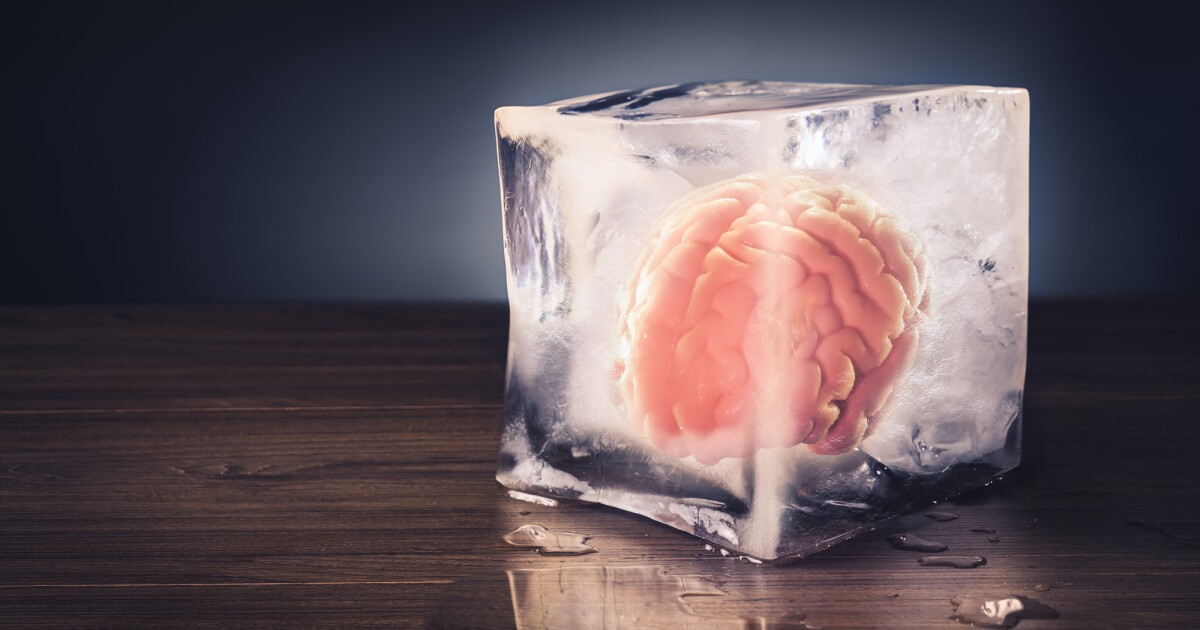- cross-posted to:
- science@lemmy.world
- science
- cross-posted to:
- science@lemmy.world
- science
Intriguingly, brain organoids preserved in MEDY showed similar growth and function patterns to those that had never been frozen. Incredibly, one batch was frozen in MEDY for as long as 18 months, and still showed similar protections against damage after thawing.
The team also froze samples of living brain tissue taken from a human epilepsy patient, and found that MEDY protected them from damage. The process didn’t disrupt the structure of the brain cells, and even preserved the pathologies of epilepsy – that’s important, because it means samples can be frozen for later study or analysis without damage from the freezing process confusing the results.
Very cool especially for research - hopefully this can allow for better research into how the brain functions as they’re able to amass rare brain issues and study them together with this new found ability to preserve brain matter
I’d take “works perfectly” with a grain of salt. “Doesn’t die and continues to grow after thawing” is more accurate, IMHO.
Also, it’s China, so higher than normal chance they made it the fuck up. Research ethics is a bit of a problem in the region.
That being said, it’s not a surprising result. Usually small pieces of tissue can be frozen without problem.
Futurama here we come!
The problem is that it wouldn’t scale. You can freeze a rat but you can’t freeze a human. Humans have to much mass to freeze quickly enough
A lot of people don’t realise, we can and did. In the 50’s. It completely works on small creatures.
Unfortunately, like you said, cooling is really hard to do quickly in bulk, and no cute tricks have been forthcoming quite yet.
It is a matter if physics. Humans have to much mass. You might successfully freeze the outside but the organs will be destroyed by ice crystals. There also is the issue of if we should but that is a discussion to another day.
The most obvious way around that would be some kind of cryoprotectant, but those have all proven very toxic so far. The next frontier would be trihalose, which we’ve figured out how to produce in quantity recently, so watch out for news on that. To get something hot evenly and quickly, RF heating works great, but it’s not obvious there’s any equivalent for cooling, unless you’re dealing with a few already-cryogenic atoms. One thing I’ve wondered about is using high pressures that depress the freezing point of water, but those kinds of pressures are sometimes biochemically toxic on their own. No research on short exposure in animals seems to exists, unfortunately.
It’s so close to working, I feel like we’ll solve it eventually, but I don’t know when or how.
If I remember correctly the issue has to do with the water in your bodies you can only cool water so fast. If I am recalling correctly you couldn’t even do it with absolute zero temperatures as the water takes to much time to lose energy.
Well, no. Reductionism still holds. If you could magically make the water everywhere inside super cold, it would behave locally just like water in a smaller creature. Unfortunately, it seems impossible to do that. Even pumping coolant through the circulatory system, which is a thing I know at least happens in some related procedures.
Its a very complex problem. Even if you pump coolant it will either prevent cells from getting oxygen or clog both of which are bad.
My point previously was that water doesn’t conduct heat well. (0.6065 W/(m·K))
Yeah, it’s a doozy of an engineering problem. It’s like trying to build a lever out of sand. There’s just no way to tackle it straight.




